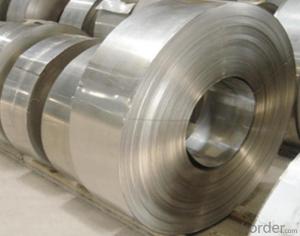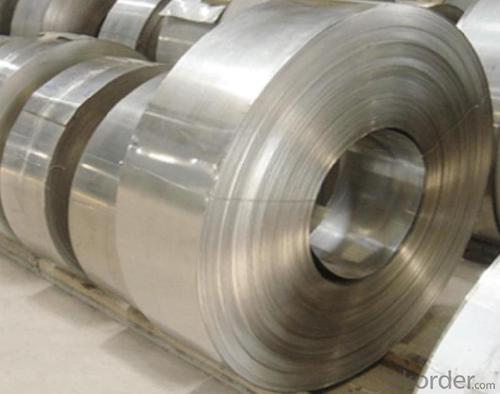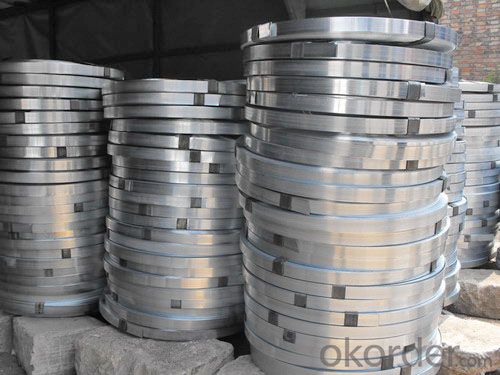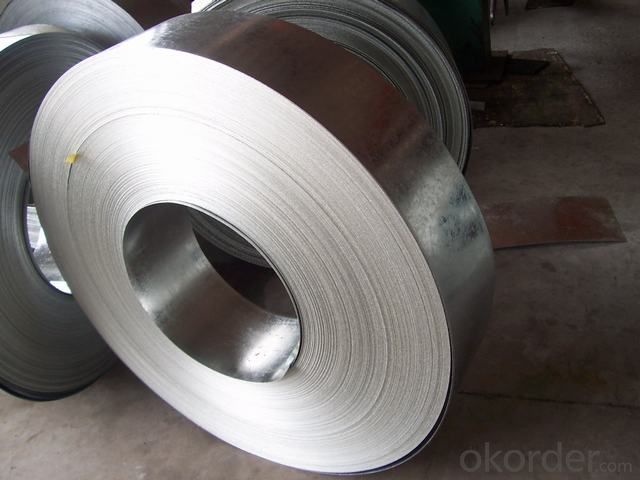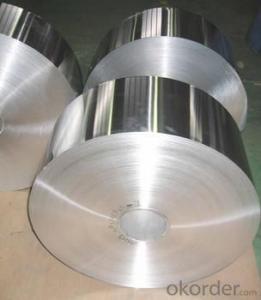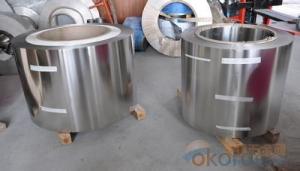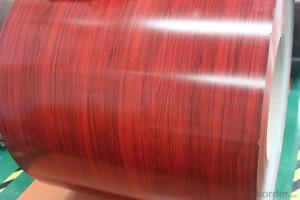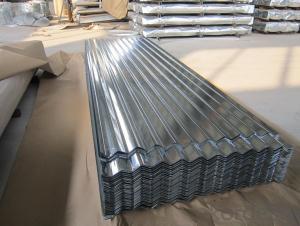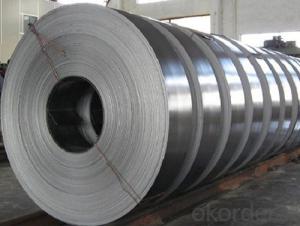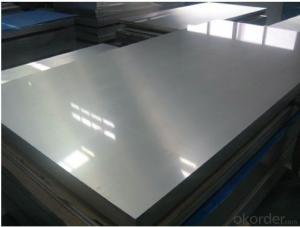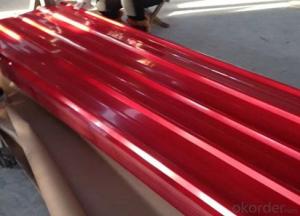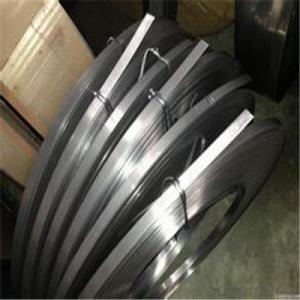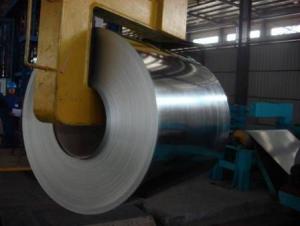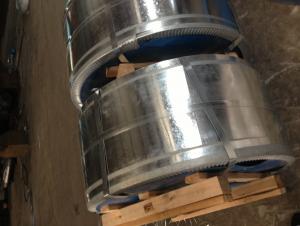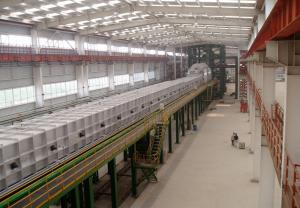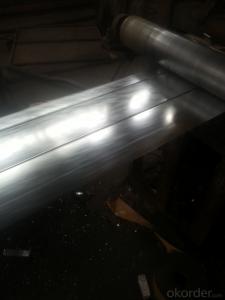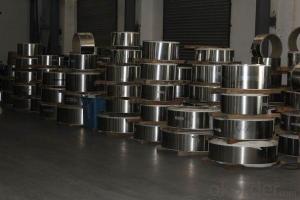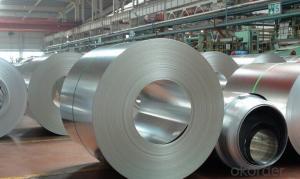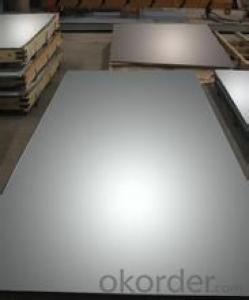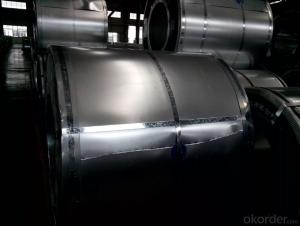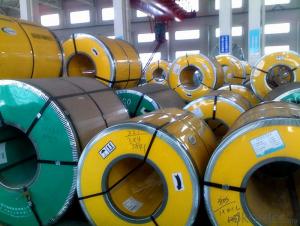Hot Galvanized Steel Strip
- Loading Port:
- China Main Port
- Payment Terms:
- TT OR LC
- Min Order Qty:
- -
- Supply Capability:
- -
OKorder Service Pledge
Quality Product, Order Online Tracking, Timely Delivery
OKorder Financial Service
Credit Rating, Credit Services, Credit Purchasing
You Might Also Like
Specifications
Hot & Cold rolled galvanized steel strip with excellent quality and various thickness
HOT GALVANIZED STEEL STRIP
Materail: Q195 steel sheet.
Processing technique: Hot & electric rolled galvaznized
| adopt wide hot galvanized strip produced by famous company as Bao Steel which has even thickness |
| we introduce a new complete set of cutting technology |
| keep steady precision |
| reduce waste of material farthest |
| adopt physical technique in order to make the galvanized level thicker |
| enhance the rustproof capability |
| adopt non-chrome passivation technique |
| protect the environment against pollution |
| adopt level pressure technique and inert gases protect technique |
| make the galvanized level brighter |
| delay oxidation phenomenon in natural environment |
- Q: Are steel strips suitable for cold working?
- Steel strips can be used for cold working, which involves shaping or forming the metal at room temperature or below its recrystallization temperature. Steel is a flexible and moldable material that can be cold worked through techniques like rolling, bending, drawing, and stamping. When steel strips are cold worked, it can lead to enhancements in surface finish, dimensional accuracy, and mechanical properties. Moreover, this process enables the creation of intricate shapes and precise tolerances. Nevertheless, the degree of cold working achievable by steel strips relies on the particular grade and composition of the steel, as well as the intended purpose and application.
- Q: What are the tolerances for dimensional accuracy of steel strips?
- The dimensional accuracy tolerances of steel strips can vary depending on specific requirements and industry standards. However, in general, the tolerances for dimensional accuracy of steel strips are typically determined by the strip's thickness, width, and length. Regarding thickness, the tolerance is usually specified as either a range or a maximum allowable deviation from the desired thickness. This tolerance can be expressed as a percentage or an absolute value, depending on the application. For instance, a common thickness tolerance for steel strips may be ± 0.05mm or ± 5% of the desired thickness. Similarly, the width tolerance for steel strips is typically specified as a range or a maximum allowable deviation. This tolerance ensures that the strip falls within acceptable width limits. For example, a typical width tolerance for steel strips could be ± 0.1mm or ± 1% of the desired width. The tolerance for the length of steel strips is often specified as a maximum allowable deviation from the desired length. This tolerance ensures that the strip remains within acceptable length limits. For instance, a common length tolerance for steel strips might be ± 1mm or ± 0.5% of the desired length. It is important to note that these tolerances can vary depending on the specific application, industry standards, and customer requirements. Various industries, such as automotive, construction, or manufacturing, may have their own unique tolerances for dimensional accuracy of steel strips. Therefore, consulting relevant industry standards or customer specifications is crucial to determine the precise tolerances required for a specific application.
- Q: What are the cost considerations for steel strips?
- The cost considerations for steel strips involve various factors that can impact the overall price. Firstly, the type and grade of steel used in the production of the strips play a significant role. Different types of steel, such as carbon steel, stainless steel, or alloy steel, have varying costs due to differences in their composition and properties. The thickness and width of the steel strips also affect the cost. Thicker and wider strips generally require more raw material, resulting in higher production costs. Additionally, the precision and tolerance requirements of the strips can influence the cost as they may necessitate additional processing steps or specialized equipment. The quantity and volume of steel strips being ordered can impact the price as well. Larger quantities usually lead to economies of scale and lower unit costs. Suppliers may offer discounts for bulk orders or long-term supply contracts, reducing the overall expense. The market demand and availability of steel can affect its cost. If the demand for steel is high and the supply is limited, prices may increase. Conversely, during periods of low demand or oversupply, prices may be more competitive. Fluctuations in raw material costs, such as iron ore or scrap metal, can also influence the price of steel strips. Transportation and logistics expenses should also be considered. If the steel strips need to be shipped over long distances or require special handling, it can add to the overall cost. Moreover, import/export duties, taxes, and customs fees can impact the final price, particularly for international transactions. Lastly, additional factors like quality certifications, surface finishes, and any additional value-added services requested by the customer can contribute to the overall cost. These considerations should be balanced with the desired quality, performance, and specifications required for the intended application of the steel strips.
- Q: Can steel strips be used in the production of surgical implants?
- Yes, steel strips can be used in the production of surgical implants. They are often used as a raw material for manufacturing various types of implants, such as plates, screws, and rods, due to their strength, biocompatibility, and corrosion resistance. Steel strips are commonly utilized in orthopedic, dental, and reconstructive surgeries to provide stability and support in the body.
- Q: What is the difference between hot rolling and cold rolling of steel strips?
- The main difference between hot rolling and cold rolling of steel strips lies in the temperature at which the process takes place and the subsequent effects on the material. Hot rolling involves heating the steel strips at extremely high temperatures, typically above the recrystallization temperature of the metal. This softens the steel and makes it more malleable, allowing it to be easily shaped and formed into various products. The heated steel is then passed through a series of rollers to reduce its thickness and achieve the desired dimensions. Hot rolling results in a smoother surface finish and less residual stress in the steel, making it suitable for applications that require a higher strength or ductility. On the other hand, cold rolling is performed at room temperature or slightly below it, without heating the steel strips. This process involves passing the steel through a series of rollers that gradually reduce its thickness. Cold rolling not only refines the grain structure of the steel but also increases its hardness and strength. Additionally, cold rolling improves the surface finish of the steel, making it suitable for applications where a smooth and polished appearance is desired. In summary, hot rolling is carried out at high temperatures to achieve better formability and shape the steel, while cold rolling is performed at room temperature to enhance the mechanical properties and surface finish of the steel. The choice between hot rolling and cold rolling depends on the specific requirements of the end product and the desired characteristics of the steel.
- Q: Are steel strips suitable for the manufacturing of pharmaceutical equipment?
- Yes, steel strips are suitable for the manufacturing of pharmaceutical equipment. Steel strips provide excellent strength, durability, and corrosion resistance, making them ideal for pharmaceutical industry requirements. Additionally, steel strips can be easily formed, welded, and machined into various shapes and sizes, allowing for the customization and precision needed in pharmaceutical equipment manufacturing.
- Q: How do steel strips compare to titanium or aluminum strips?
- Steel strips are generally stronger and more durable than titanium or aluminum strips. They have a higher tensile strength, making them ideal for applications that require resistance to bending or breaking. However, titanium strips offer superior corrosion resistance and are much lighter than steel, while aluminum strips are lighter still but less strong. The choice between steel, titanium, or aluminum strips depends on the specific requirements of the project, such as strength, weight, or corrosion resistance.
- Q: How are steel strips cut into specific lengths?
- Various methods and tools are employed to cut steel strips into specific lengths. Among them, using a shear is a common approach. The shear, a machine specially designed for metal cutting, is employed. The steel strip is placed within the shear, and its blades are then activated to slice through the strip, resulting in the desired length. Another technique involves the utilization of saws, such as circular saws or band saws. These saws are equipped with sharp blades containing teeth that effectively penetrate steel. The steel strip is securely fixed, and the saw is utilized to sever the strip, creating the desired length. Advanced methods incorporate laser cutting and plasma cutting technologies. Laser cutting utilizes a high-powered laser beam to either melt or vaporize the steel along the desired cutting line, resulting in an accurate and clean cut. In contrast, plasma cutting employs a stream of ionized gas to heat and melt the steel, making it easily divisible into specific lengths. Regardless of the chosen method, precise measurements and meticulous control over the cutting process are paramount to ensuring the steel strips are accurately severed into the desired lengths.
- Q: How are steel strips used in the manufacturing of industrial machinery?
- Steel strips are used in the manufacturing of industrial machinery as they provide high strength and durability, allowing for the construction of robust machine components such as gears, frames, and structural supports. The strips are often processed and shaped into desired forms through techniques like rolling, cutting, and bending, enabling their integration into various machinery parts. Additionally, steel strips can be surface-treated or coated to enhance their resistance to corrosion and wear, further improving the longevity and performance of the industrial machinery.
- Q: How are steel strips coated with paint or other finishes?
- Steel strips can be coated with paint or other finishes through a process known as coil coating. This method involves the continuous application of a coating material onto the steel strip as it passes through a series of rollers. The process begins with the cleaning and pre-treatment of the steel strip to ensure proper adhesion of the coating. This is typically done by removing any dirt, rust, or oil from the surface through chemical treatments or mechanical processes like brushing or blasting. Once the steel strip is prepared, it is fed into a coating line where the desired finish is applied. The coating material, which can be paint, enamel, or other finishes, is typically in a liquid form and is applied to the strip using various methods such as roller coating, spray coating, or curtain coating. After the coating is applied, the steel strip passes through an oven or curing chamber where it is heated to a specific temperature. This allows the coating to chemically react and cure, forming a durable and protective layer on the surface of the steel strip. The curing process also helps in enhancing the adhesion and durability of the coating. Once the curing is complete, the coated steel strip is cooled and may undergo additional processes such as embossing, printing, or laminating, depending on the desired final product. Coil coating offers several advantages in terms of efficiency, consistency, and quality control. It ensures a uniform and controlled application of the coating material, resulting in a smooth and even finish. It also allows for high production speeds and minimal waste, making it a cost-effective and environmentally friendly method of coating steel strips.
Send your message to us
Hot Galvanized Steel Strip
- Loading Port:
- China Main Port
- Payment Terms:
- TT OR LC
- Min Order Qty:
- -
- Supply Capability:
- -
OKorder Service Pledge
Quality Product, Order Online Tracking, Timely Delivery
OKorder Financial Service
Credit Rating, Credit Services, Credit Purchasing
Similar products
Hot products
Hot Searches
Related keywords
